The mystique of nightjars lies in their enigmatic nocturnal lifestyle, which offers a glimpse into the intriguing world of these elusive avians.
Nightjars, members of the family Caprimulgidae, are renowned for their cryptic plumage, silent flight, and haunting calls that echo through the twilight hours.
As creatures of the night, they navigate darkness with grace, employing specialized adaptations to hunt insects under the cover of dusk and dawn.
Despite their widespread distribution across the globe, nightjars’ lives remain in mystery, their habits and behaviors often hidden from human view.
In this exploration, we embark on a journey to unravel the secrets of these nocturnal beings, delving deeper into their fascinating biology, ecological significance, and the challenges they face in an ever-changing world.
Join us as we take a closer look into the lives of these nocturnal avians and uncover the mystique of nightjars. Stay focused.
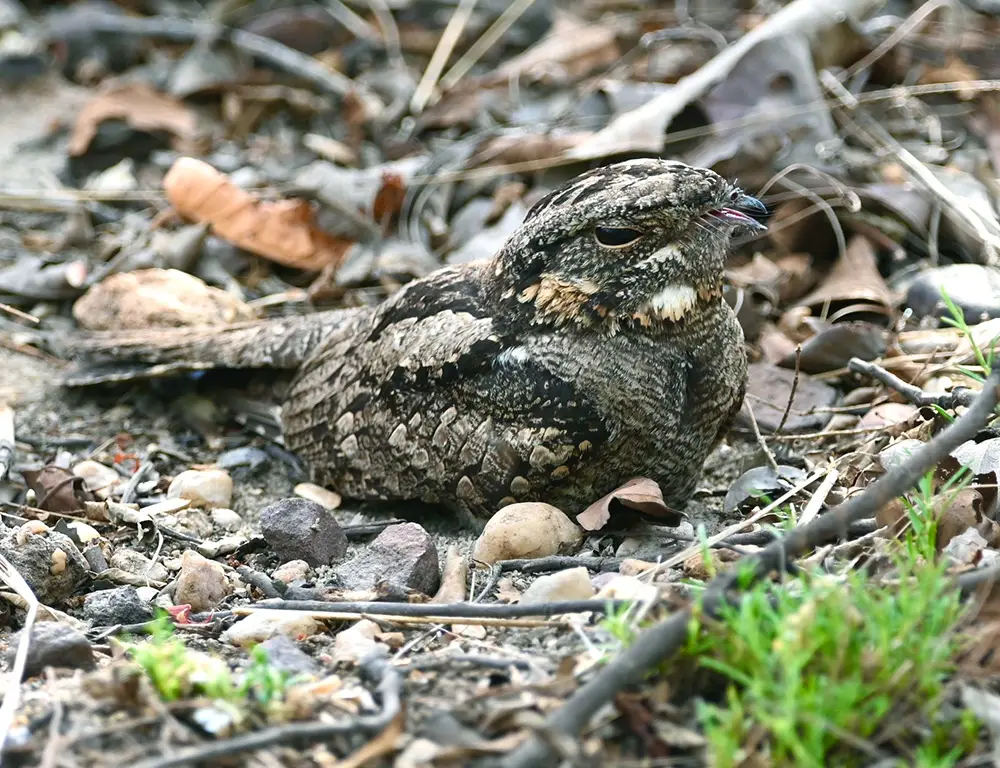
Physical Characteristics of Nightjars
Nightjars are fascinating birds known for their cryptic plumage and nocturnal habits. Here are some of their physical characteristics:
Camouflage Plumage
Nightjars typically have mottled or speckled plumage that helps them blend seamlessly into their surroundings, making them incredibly difficult to spot during the day.
This cryptic coloration helps them evade predators and remain hidden while roosting on the ground.
Large Eyes
Nightjars have large eyes relative to their head size, which aids them in low-light conditions when they are most active. Their eyes are adapted for night vision, allowing them to detect prey and navigate in dim light.
Wide Mouth
Nightjars have vast mouths bordered by stiff bristles, giving them a unique appearance.
This adaptation is advantageous for catching flying insects on the wing. They can open their mouths wide to scoop up insects while in flight.
Short Legs and Weak Feet
Nightjars have relatively short legs and weak feet compared to other birds. They primarily hunt aerial insects rather than chasing prey on the ground.
Their feet are not strong enough for grasping or carrying prey like raptors; instead, they use them mainly for perching.
Silent Flight
Nightjars possess specialized wing feathers that allow them to fly silently, making them effective nocturnal hunters. This adaptation helps them sneak up on unsuspecting prey without alerting them to their presence.
Cryptic Behavior
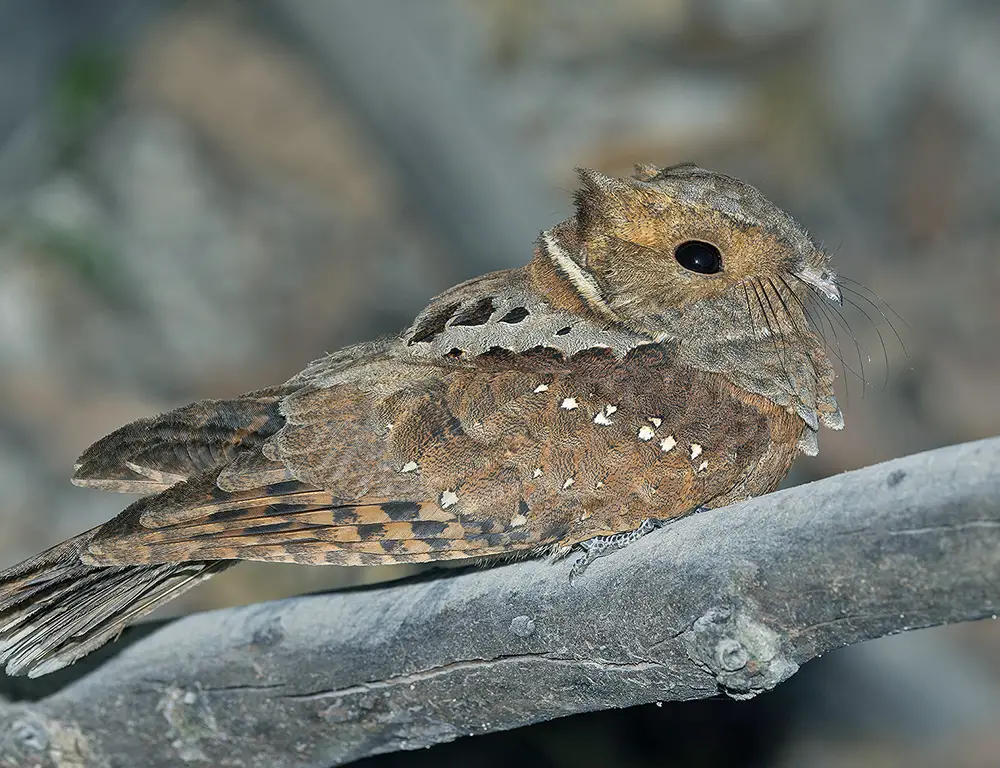
In addition to their cryptic plumage, nightjars have a unique behavior of sitting motionless on the ground during the day, relying on their camouflage to avoid detection.
This behavior helps them conserve energy while remaining hidden from predators.
The physical characteristics of nightjars are finely tuned to their nocturnal lifestyle and insectivorous diet, allowing them to thrive in diverse habitats around the world.
Taxonomical details of Nightjars
Taxonomy is the scientific classification of organisms based on shared characteristics and evolutionary relationships.
It organizes living organisms into a hierarchical system, ranging from broad categories like kingdom and phylum to specific categories like genus and species.
Taxonomy helps scientists understand the evolutionary history and relationships between different species.
Here’s a quick table outlining the taxonomical details of nightjars:
| Kingdom | Animalia |
| Phylum | Chordata |
| Class | Aves |
| Order | Caprimulgiformes |
| Family | Caprimulgidae |
| Subfamily | Caprimulginae |
| Genus | Various genera |
| Species | Various species |
Nightjars belong to the order Caprimulgiformes and the family Caprimulgidae, which includes nightjars, nighthawks, and allies.
Nightjars are further classified into the subfamily Caprimulgidae. The genus and species names vary depending on the specific species of nightjar.
Numerous species of nightjars are distributed across various regions worldwide, each with its own unique characteristics and ecological niche.
Nightjars belong to the family Caprimulgidae, which consists of approximately 90 species distributed across the globe, with the highest diversity found in tropical regions.
These birds are renowned for their nocturnal habits, cryptic plumage, and aerial hunting skills. Below, I’ll describe some common species of nightjars:
Common Nighthawk (Chordeiles minor)
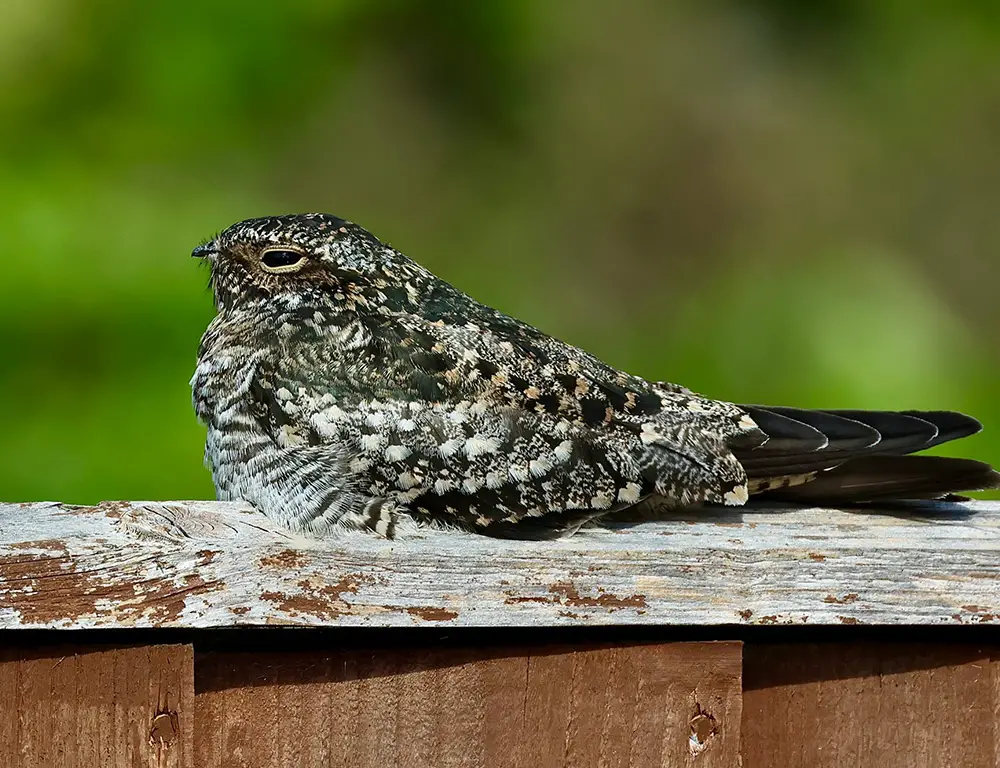
- Found throughout North and South America.
- Medium-sized nightjar with mottled brown plumage.
- Distinctive white wing patches and white throat.
- Nests on the ground, often in open habitats.
- Hunts insects on the wing at dusk and dawn.
- Migratory, spending winters in South America.
European Nightjar (Caprimulgus europaeus)
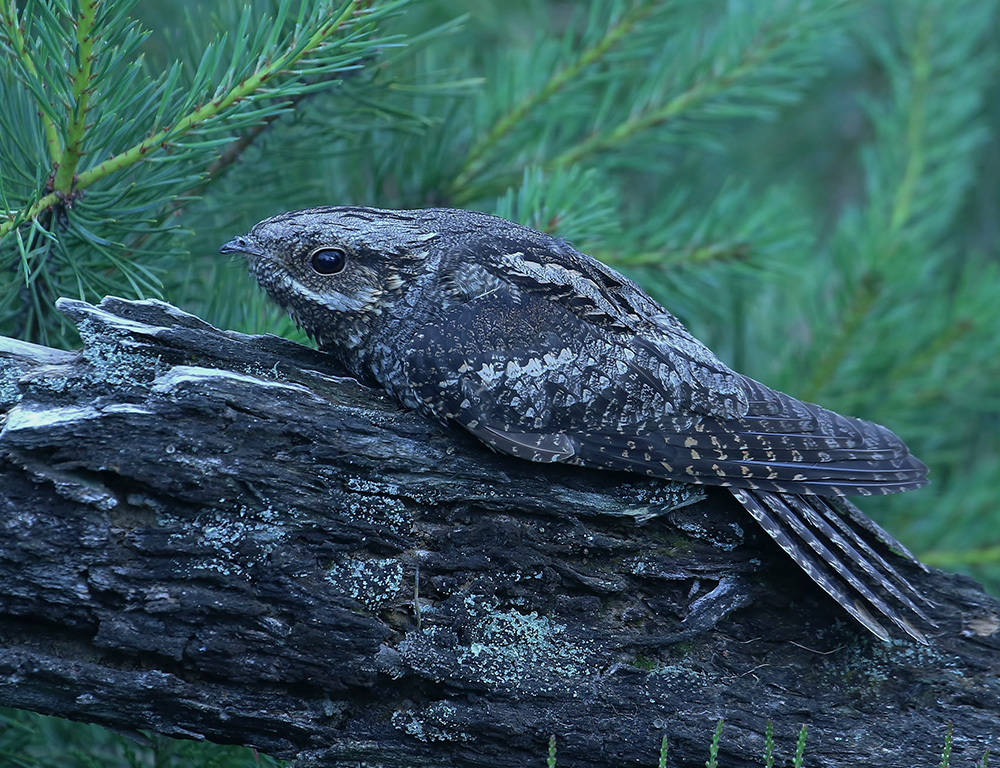
- Native to Europe, parts of Asia, and North Africa.
- Nocturnal bird with cryptic plumage for camouflage.
- The male has white patches on their wings and tail; the female lacks these patches.
- Migratory species spend winters in Africa.
- Known for its distinctive “churring” call during the breeding season.
- Nests on the ground, often in heathlands and open woodlands.
Eastern Whip-poor-will (Antrostomus vociferus)
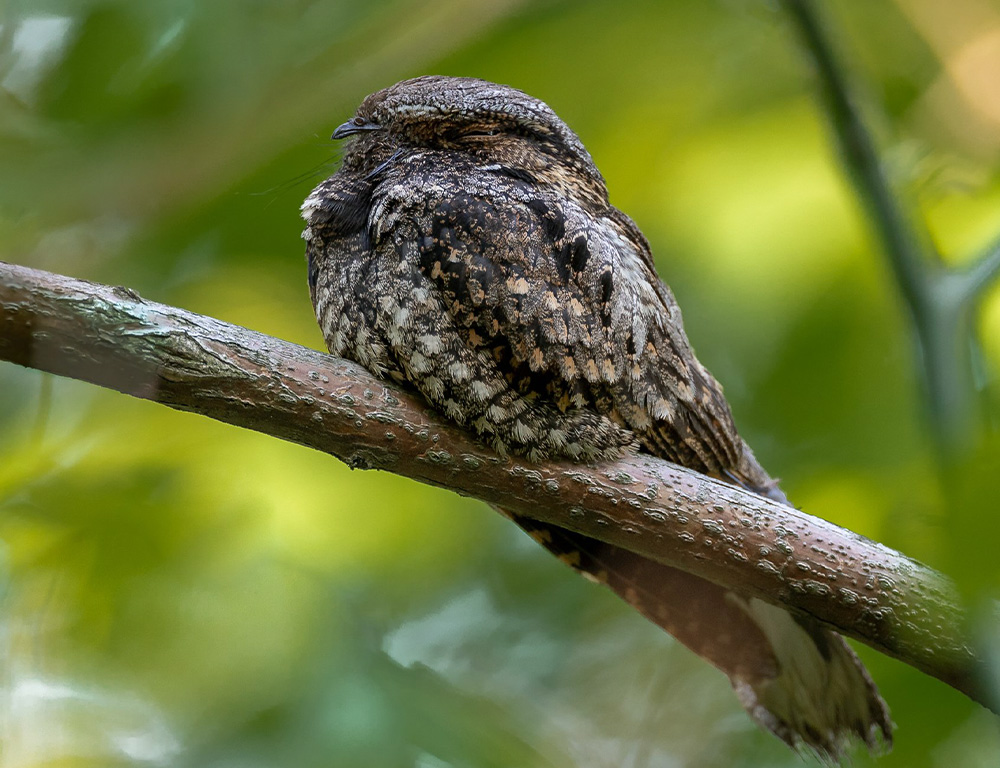
- Found in North America, primarily in forests and woodlands.
- Named for its distinctive “whip-poor-will” call.
- Cryptic plumage with intricate patterns of brown, gray, and black.
- Nocturnal insectivore, foraging for moths, beetles, and other insects.
- Nests on the ground, relying on camouflage to protect eggs and young.
- May migrate to Central or South America during the winter.
Australian Owlet-nightjar (Aegotheles cristatus)
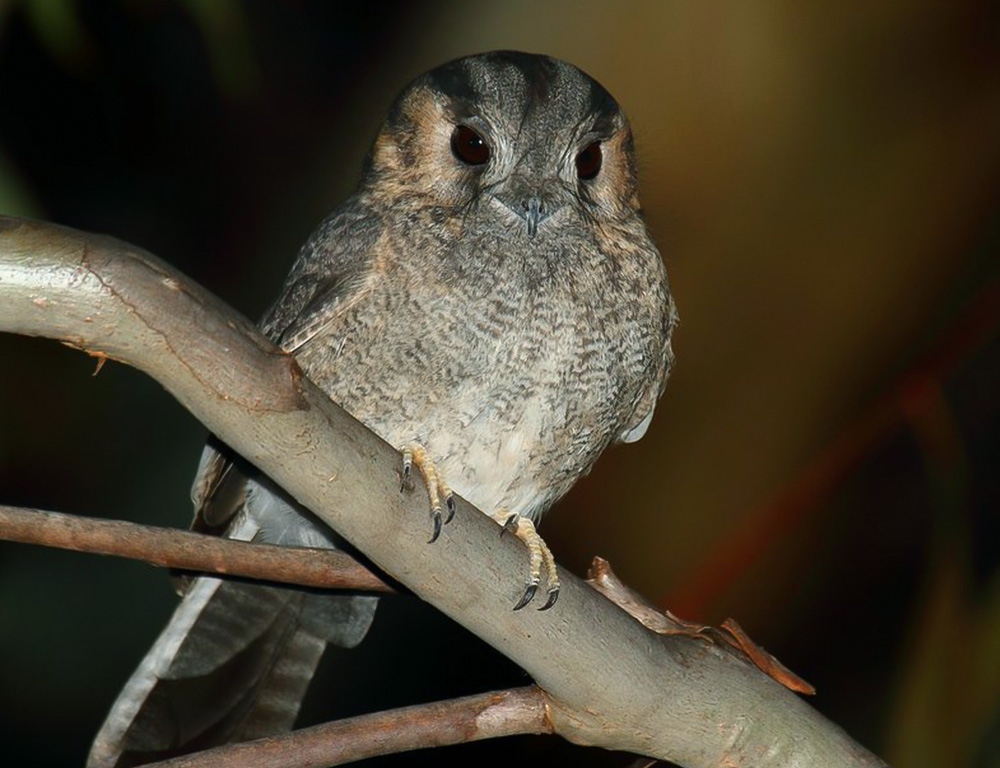
- Native to Australia and nearby islands.
- Small, stocky nightjar with a large head and eyes.
- Nocturnal hunters, feeding on insects, spiders, and small vertebrates.
- Typically found in forests, woodlands, and scrub habitats.
- Nests in tree hollows or crevices, often near water sources.
- Male and female share incubation and chick-rearing duties.
Long-tailed Nightjar (Caprimulgus climacurus)
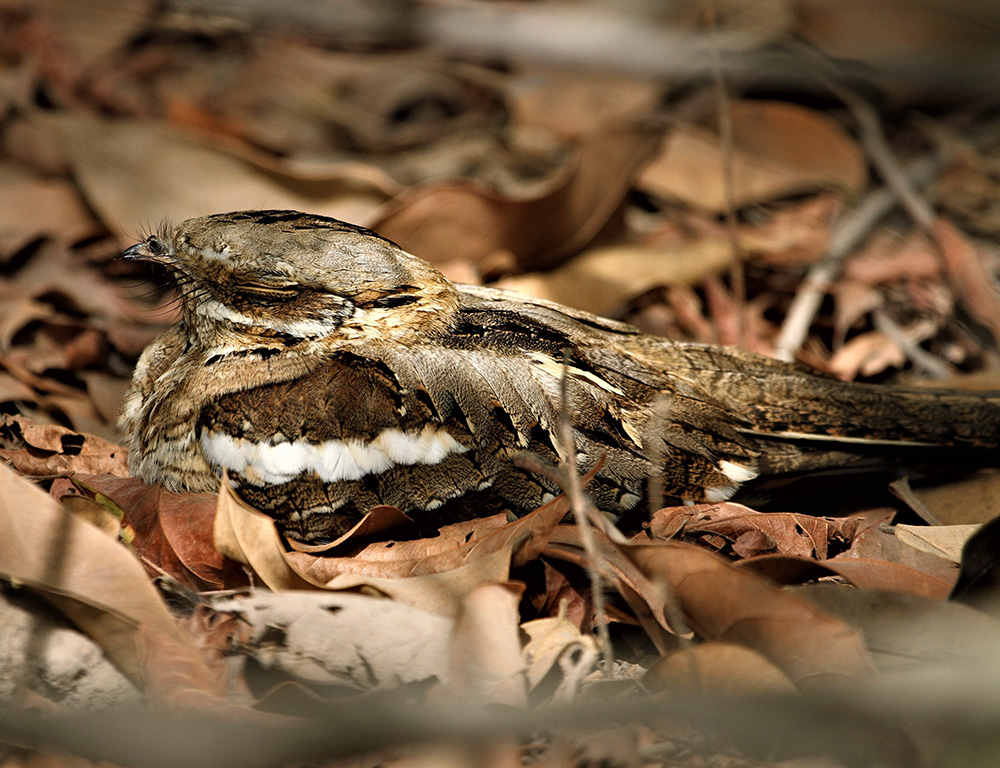
- Found in sub-Saharan Africa, from Senegal to Ethiopia and south to South Africa.
- Large nightjar with long wings and tail.
- Distinctive white patches on wings and outer tail feathers.
- Nocturnal insectivore, hunting flying insects over open habitats.
- Breeds in dry savannas and grasslands, often near water.
- Migratory, moving to southern Africa during the non-breeding season.
These are just a few examples of the diverse species of nightjars globally. Each species has unique characteristics, behaviors, and habitat preferences, contributing to the rich tapestry of avian biodiversity.
Nightjars’ Morphology and Adaptations
Nightjars possess several unique morphological features and adaptations that allow them to thrive in their nocturnal and crepuscular (active during dawn and dusk) lifestyles. Here are some notable ones:
Cryptic Plumage
Nightjars have cryptically patterned plumage that helps them blend seamlessly into their surroundings, making them nearly invisible to predators and prey alike during the day.
This camouflage allows them to roost on the ground without attracting attention.
Large Eyes and Binocular Vision
Nightjars have large eyes relative to their head size, enhancing their ability to see in low-light conditions.
Their eyes are also positioned on the sides of their heads, providing a wide field of view and excellent depth perception, crucial for detecting and capturing prey in dim light.
Wide Mouth and Gaping
Nightjars have vast mouths bordered by stiff bristles, allowing them to open their mouths wide to catch flying insects while in flight.
This adaptation enables them to feed on various aerial prey, including moths, beetles, and flying ants.
Silent Flight
Nightjars possess specialized wing feathers with soft edges that allow them to fly silently, making them effective nocturnal hunters.
Unlike many other birds, they produce minimal wing noise while flying, enabling them to approach prey quietly and without detection.
Long Wings and Tail
Many nightjar species have long, pointed wings and tails, enhancing their flight agility and maneuverability.
These adaptations are beneficial for aerial hunting, allowing nightjars to execute sharp turns and sudden changes in direction to catch agile prey.
Nocturnal Vocalizations
Nightjars are known for their distinctive calls, crucial in communication, territory defense, and courtship.
These vocalizations are often characterized by repetitive churring, trilling, or whistling sounds, which help individuals locate each other in the dark and maintain social bonds.
Adaptations for Ground Roosting
Nightjars typically roost on the ground during the day, relying on their cryptic plumage and immobility to avoid detection.
Their short legs and weak feet are adapted for perching rather than walking, and they may adopt unique postures to minimize their silhouette and blend into their surroundings.
Life History of Nightjars
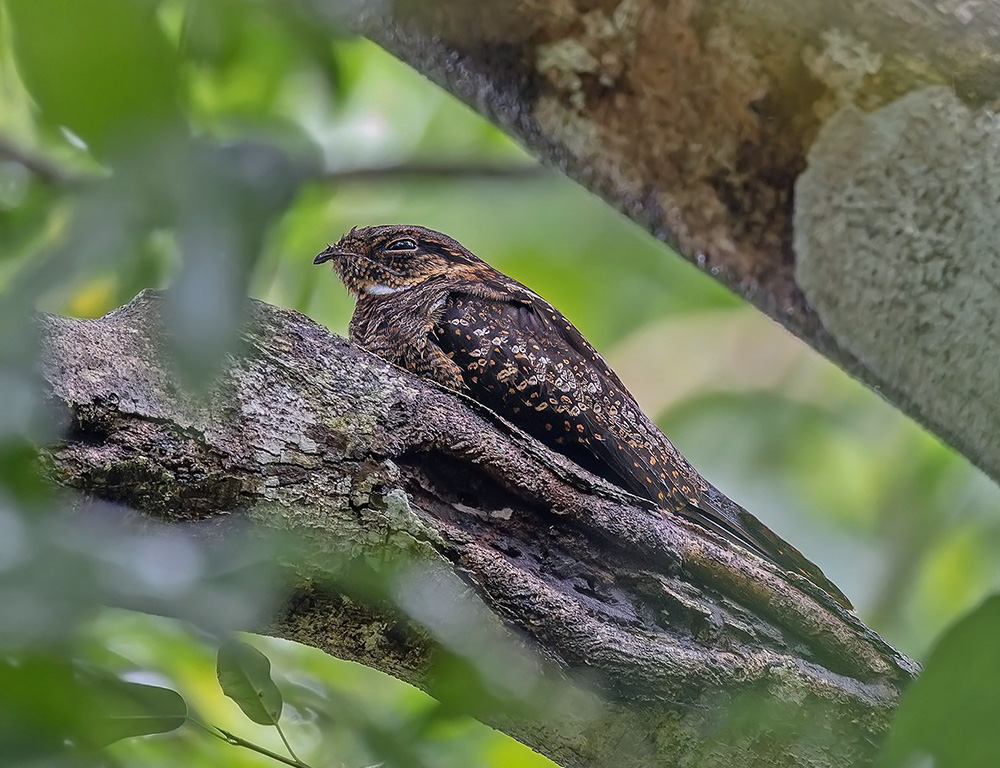
Nightjars, belonging to the family Caprimulgidae, are a fascinating group of birds known for their nocturnal habits and cryptic plumage.
With their wide mouths, large eyes, and silent flight, they are superbly adapted to hunt insects during the twilight hours.
Let’s explore the intricate life history of nightjars, encompassing their feeding habits, habitat preferences, nesting behavior, breeding biology, diseases, and hunting strategies.
Food
Nightjars are primarily insectivorous, feeding on flying insects such as moths, beetles, flies, and flying ants.
Their wide mouths and specialized bristles allow them to catch insects on the wing with remarkable agility. They typically hunt during dusk and dawn, using their keen vision to detect prey in low-light conditions.
Habitat
Nightjars inhabit many habitats, including woodlands, heathlands, grasslands, scrublands, and savannas.
They are often found in open areas with scattered trees or shrubs, where they can roost on the ground during the day and hunt for insects during the night.
Range Map
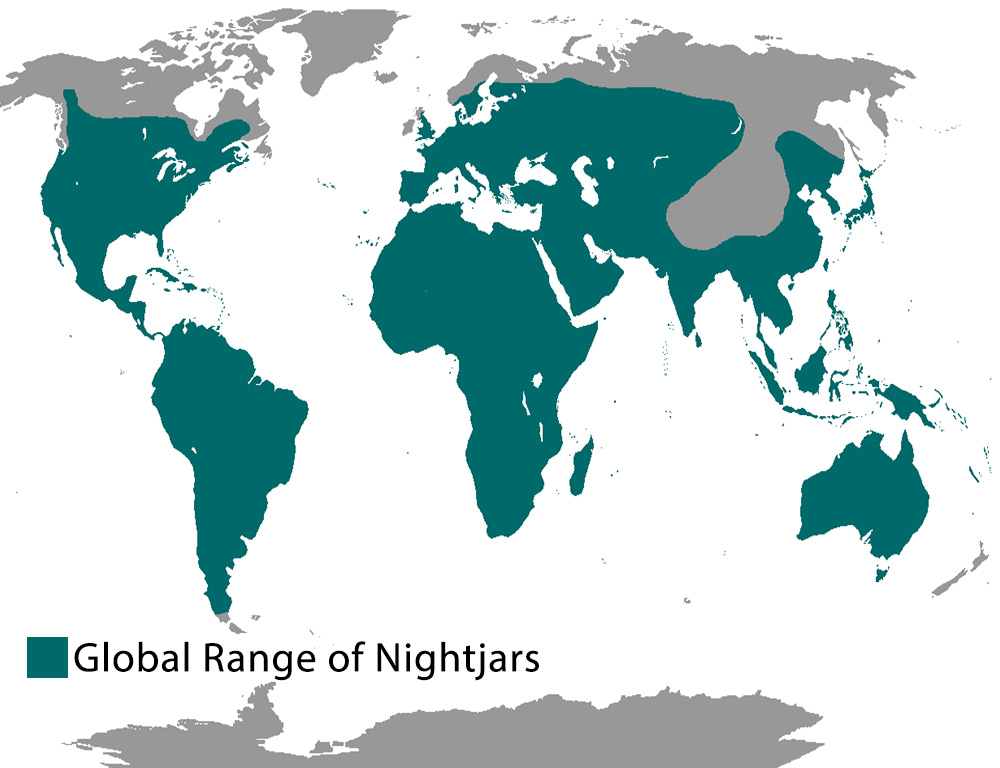
Nightjars are globally distributed, with species found on every continent except Antarctica.
Their range varies depending on the species, with some species being restricted to specific regions while others have more extensive distributions.
A range map depicting the distribution of different nightjar species can provide valuable insights into their geographical presence.
Nesting
Nightjars typically nest on the ground, often in concealed locations such as under bushes, grassy vegetation, or amidst leaf litter.
They may also use natural depressions or scrape out shallow nests in sandy or gravelly substrates. Their nests are superficial scrapes lined with minimal materials, and they may lay one or two eggs per clutch.
Breeding
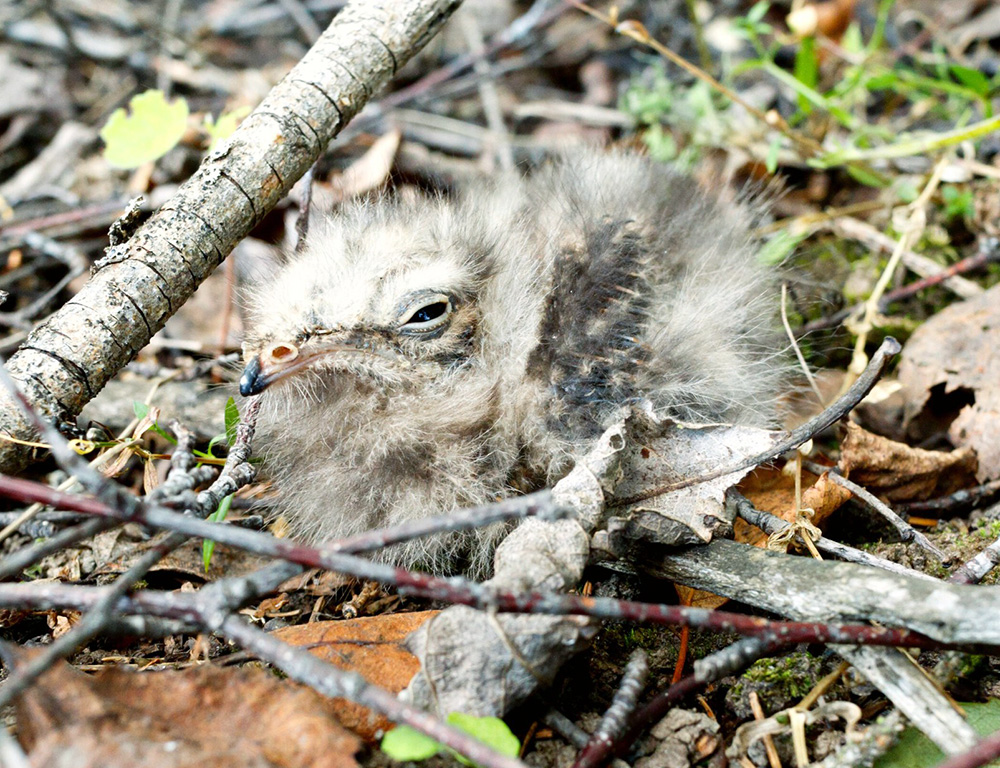
Breeding behavior in nightjars is often characterized by elaborate courtship displays, which may involve aerial acrobatics, vocalizations, and territorial defense.
Males may use churring calls or wing-clapping displays to attract females and establish dominance. Once pairs form, females will lay eggs in their ground nests, and both parents typically share incubation and chick-rearing duties.
Diseases and Treatment
Nightjars may be susceptible to various diseases, including avian malaria, West Nile virus, and parasitic infections.
Treatments for diseased nightjars may include supportive care, antiparasitic medications, and vaccinations.
However, preventive measures such as habitat conservation and minimizing exposure to potential disease vectors are crucial for maintaining nightjar populations’ health.
Hunting Habit
Nightjars are crepuscular and nocturnal hunters, relying on their excellent vision and silent flight to capture prey efficiently.
They are opportunistic feeders, taking advantage of insect swarms and congregations near artificial lights or bodies of water.
Their agile flight allows them to pursue and capture flying insects with precision, making them valuable predators in controlling insect populations.
The life history of nightjars is intricately intertwined with their specialized adaptations for nocturnal living, ranging from their feeding habits and habitat preferences to their nesting behavior and breeding biology.
Conservation Status and Threats for Nightjars
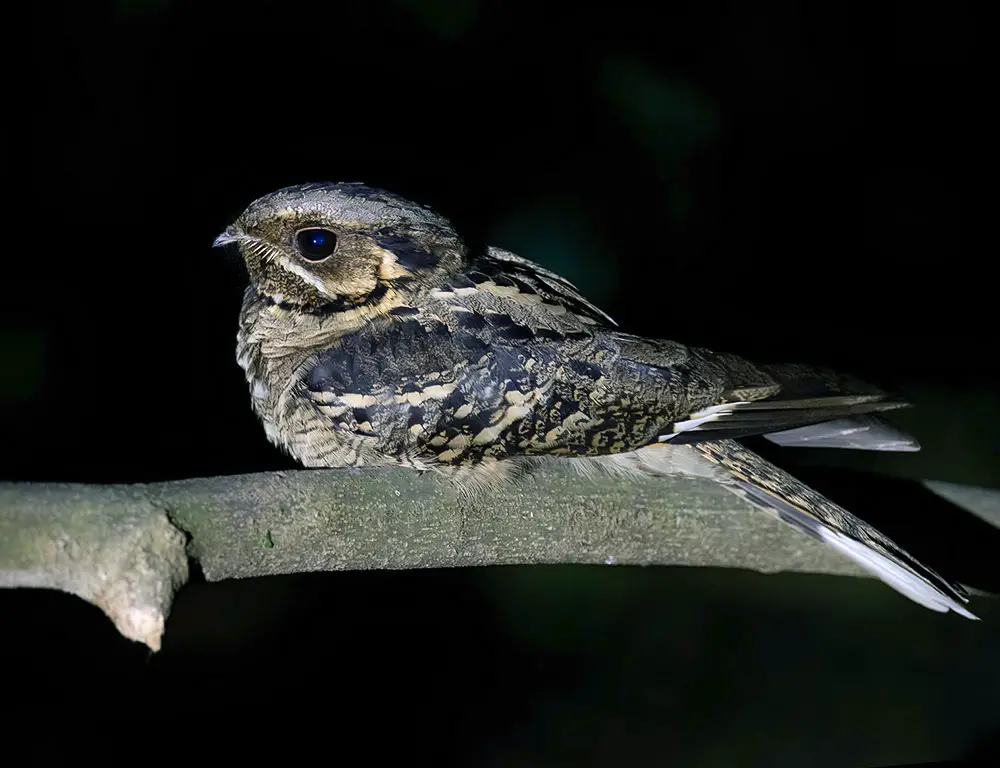
The conservation status of nightjars varies among species, but many face threats that jeopardize their populations. Here are some common threats and conservation concerns for nightjars:
Habitat Loss and Degradation
Nightjars rely on diverse habitats for breeding, foraging, and roosting. However, habitat loss due to deforestation, urbanization, agriculture, and infrastructure development threatens their survival.
Fragmentation and degradation of natural habitats further exacerbate this issue, limiting available nesting sites and reducing prey abundance.
Light Pollution
Nightjars are sensitive to artificial light pollution, which can disrupt their natural behaviors and nocturnal activities.
Artificial lights can disorient migrating individuals, interfere with navigation, and disrupt feeding and breeding patterns.
Light pollution may also attract insects away from natural foraging areas, affecting nightjars’ food sources.
Climate Change
Climate change poses significant challenges for nightjars, altering temperature and precipitation patterns, shifting habitat ranges, and affecting prey availability.
Weather patterns can disrupt breeding cycles, affect food resources, and increase the frequency and intensity of extreme weather events, such as storms and droughts, directly impacting nightjar populations.
Pesticide Use
Nightjars are exposed to pesticides by ingesting contaminated prey, leading to bioaccumulation and adverse health effects.
Pesticides used in agriculture, forestry, and mosquito control can have toxic effects on nightjars and other non-target organisms, resulting in population declines and reproductive failures.
Human Disturbance
Human activities, such as recreational activities, tourism, and habitat encroachment, can disturb nightjars and disrupt their breeding, roosting, and foraging behaviors.
Nest disturbances, habitat destruction, and disturbance during the breeding season can lead to nest abandonment, reduced reproductive success, and population declines.
Illegal Hunting and Trade
In some regions, nightjars are targeted for hunting, either for traditional medicine, food, or the illegal pet trade. Unsustainable harvesting practices can deplete local populations and threaten the survival of vulnerable species.
Invasive Species
Invasive predators like rats, cats, and snakes can prey on nightjar eggs, chicks, and adults, leading to population declines and localized extinctions.
Invasive plants can also alter habitat structure and composition, reducing suitable nesting and foraging sites for nightjars.
Conservation efforts for nightjars typically focus on habitat conservation and restoration, mitigating threats such as habitat loss, light pollution, and pesticide use, implementing measures to reduce human disturbance, and conducting research to understand their ecology and conservation needs better.
Wrapping Up
Nightjars are fascinating birds with unique adaptations for nocturnal living, including cryptic plumage, silent flight, and wide mouths for catching flying insects.
However, they face numerous threats, including habitat loss, light pollution, climate change, and human disturbance.
Conservation efforts are crucial to protect nightjar populations and their habitats, encompassing habitat conservation, reducing light pollution, pesticide regulation, and raising awareness about the importance of preserving these enigmatic birds. Thank you very much.